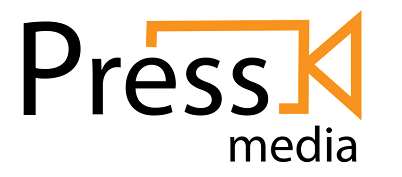In today’s rapidly transforming world, the financial landscape has not been immune to change. The advent of digital technology has redefined many aspects of our lives, from communication to shopping, and now even borrowing. Online loans, especially in the form of Online Personal Loans, have ushered in a new era of financial accessibility. This change prompts an intriguing question: Are online loans changing how we think about borrowing money? Let’s delve into the modern dynamics of loans and uncover how these changes shape our financial outlook.
The Changing Face of Borrowing
For many years, traditional banks were the principal providers of loans. The process involved filling out endless forms, providing collateral, and enduring long waiting periods. It was not uncommon for borrowers to feel as though they were navigating a bureaucratic maze. This landscape, however, is shifting significantly. The digital revolution, spearheaded by fintech companies, is redefining borrowing by making it more accessible and less cumbersome.
The Rise of Online Personal Loans
An Online Personal Loan is akin to a breath of fresh air in a stifling room. With just a few clicks, individuals can apply for a loan without ever stepping foot in a bank. This convenience is a game-changer, particularly in a world where time is often at a premium.
Consider an individual who needs urgent funds for a medical emergency. In the traditional setup, securing a loan would mean days, if not weeks, of waiting. Online loans, on the other hand, can often provide access to funds within 24 hours, thanks to the streamlined digital processes. This simplicity and speed are influencing how people perceive the act of borrowing itself.
How Are Online Loans Changing Perceptions?
Accessibility and Inclusivity
One of the most significant shifts brought about by Online Personal Loans is the enhancement of accessibility. Traditional banking models often excluded certain segments of the population due to stringent requirements. For example, young professionals without a lengthy credit history or small-business owners seeking microloans found it challenging to secure financial assistance.
Online loans have levelled the playing field. Many digital platforms use advanced algorithms to assess creditworthiness, considering factors beyond just a credit score. This inclusivity means more people have the opportunity to borrow money, reshaping the conventional wisdom about who qualifies for a loan.
A Culture of Financial Literacy
Online borrowing platforms often come with a wealth of resources designed to improve financial literacy. Before one clicks ‘apply’, potential borrowers have access to myriad information about interest rates, repayment terms, and their implications. This transparency is not only crucial for informed decision-making but also fosters a culture of financial education.
This educational aspect is invaluable, particularly in a country like India, where financial literacy is still a burgeoning endeavour. By empowering individuals with knowledge, online loans are shifting the narrative from one of dependence to informed autonomy.
Trust and Security Concerns
Yet, the rise of online loans is not without its challenges. Trust is a pivotal factor in financial transactions, and the anonymity of the internet can sometimes breed scepticism. Concerns about data security are paramount, especially in an age where cyber threats are increasingly sophisticated.
However, many online lending platforms are addressing these concerns by implementing robust security measures like encryption and two-factor authentication. Regulation is also evolving, with governments recognising the need for stringent guidelines to safeguard consumers. As these issues are addressed, trust in digital borrowing is likely to see an upward trend.
The Influence on Traditional Lending Institutions
Loan increasingly migrate to online platforms, traditional banks find themselves at a crossroads. Online lenders’ ability to provide rapid service and competitive interest rates poses significant competition. Consequently, many banks are adopting a hybrid model, combining their traditional strengths with digital innovations.
Collaboration Over Competition
Interestingly, some traditional banks are choosing collaboration over competition. By partnering with fintech companies, they are able to offer their customers the convenience of online borrowing without completely overhauling their existing infrastructure. Such partnerships can be mutually beneficial, allowing banks to retain their customer base while embracing modern technology.
This shift represents a broader trend in the financial industry, where collaboration is seen as a pathway to progress. By leveraging the strengths of both traditional and digital platforms, consumers are offered more choices, thereby redefining how they approach borrowing.
A Consumer-Centric Approach
Ultimately, the rise of online loans is indicative of a broader consumer-centric trend. Borrowers are no longer willing to settle for a one-size-fits-all approach. They seek flexibility, transparency, and convenience. Digital lending platforms are meeting these demands by offering tailored solutions that cater to individual needs.
The Role of Technology
Technology plays a pivotal role in this transformation. Artificial intelligence and machine learning are being employed to improve loan approval processes, predict creditworthiness, and offer personalised financial advice. This technological integration signifies a shift towards a more nuanced and individualised borrowing experience.
Such advancements ensure that the options available are not only efficient but also aligned with the diverse financial situations of borrowers. This shift in focus from institution-centric to consumer-centric is redefining the very essence of borrowing money.
The Way Forward: Embracing Change
As we stand at the cusp of a digital finance revolution, embracing change is imperative. The traditional ways of borrowing money are evolving, and resistance to this evolution can lead to missed opportunities. Consumers, financial institutions, and regulators must work collaboratively to harness the potential of online loans responsibly.
Reflection and Action
For consumers, this means becoming proactive about understanding the nuances of online borrowing. Engaging with financial resources, asking the right questions, and prioritising data security are crucial steps in this journey.
For financial institutions, it is about striking the right balance between tradition and innovation. There is a pressing need to adapt while maintaining the trust and reliability that form their foundation.
For regulators, the path involves crafting policies that protect consumers while encouraging innovation. Clear guidelines and robust frameworks can reassure consumers about the safety of their financial data.
Conclusion
The question, “Are online loans changing how we think about borrowing money?” invites reflection on the profound shifts taking place in the financial world. Online Personal Loans are not only altering perceptions but are also driving a more accessible, inclusive, and consumer-centric approach to borrowing. As the landscape continues to evolve, embracing these changes with an informed perspective will ensure that the benefits of this transformation are maximised for all stakeholders. Whether you’re a potential borrower, a banking institution, or a policymaker, recognising and adapting to this new era of lending can pave the way for a financially empowered future.

